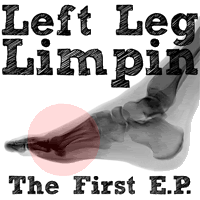


In the Appalachian region of Ohio there are found a number of small villages and towns. The Amish have a number of communitys and even a couple markets in the area. We decided to take a day while in town to visit these places as well as a Hopewell Indian mound site that was about half way between the two markets.
The one located in Frankfort is a farmers block away from the second job i ever had at the local IGA. Frankfort is located along the North Fork of Paint Creek about 15 minutes north of the former capital and current county seat, Chillicothe.
The Market we hadnt been to prior to this trip was located in Bainbridge. The area was beautiful and the drive was nice. After the grouling Thirteen and a hour drive we had just made days before we both totally enjoyed our little day trip.


Only a few minutes from my mothers the Seip Mounds were a completly free and very lovely place to spend a day. I only wish I had packed a small picnic but wasn't expecting to want to hang around as long as I did. I have always found the earthworks and mounds amazing . The last time we had went to one of the mounds nearby it had been raining and this day was beautiful!
According to Ohio History Central .org :
"Seip Mound is one of the largest earthen mounds built by the Hopewell culture (100 B.C. - 500 A.D.) of prehistoric Native American people. It is 240 feet long, 130 feet wide, and 30 feet high. Originally, this mound was surrounded by a large, semi-circular enclosure that was connected to smaller circular and square enclosures. In all, the earthworks enclosed 121 acres with 10,000 feet of embankment walls. The walls were up to ten feet in height.
The Ohio Historical Society excavated Seip Mound between 1925 and 1928. The excavation team discovered more than one hundred burials associated with a variety of artifacts crafted from exotic raw materials such as copper and mica. At the conclusion of the study, the mound was restored to its original dimensions.
Between 1906 and 1909, the Ohio Historical Society explored a smaller structure, composed of three connected mounds, located a short distance to the east of the large Seip Mound. This mound also was called "Seip Mound," but to avoid confusion it is now referred to as the Seip Conjoined Mound. Sometimes the larger Seip Mound is called the Seip-Pricer Mound."























